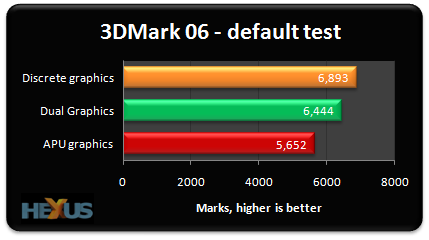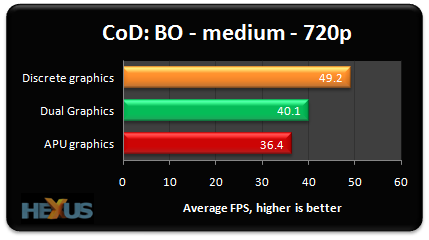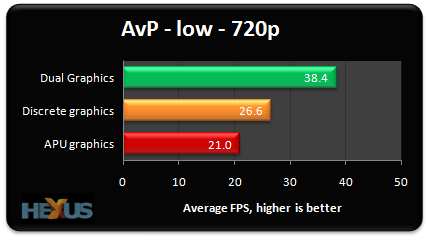Gaming - DX9, DX10 and DX11
Remember how it is possible to toggle the options in the control panel such that the APU's graphics, discrete GPU's or Dual Graphics can be run?
We've run five gaming benchmarks and split them via the API used. The reason for doing will become obvious once you examine the results.
DX9

The discrete Radeon HD 6630M GPU is about 20 per cent faster than the APU's. This makes sense because the dGPU has more shaders (480 vs. 400), a higher core speed (485MHz vs. 444MHz) and dedicated access to faster memory (1,600MHz vs. 1,333MHz).
But team the two together and performance comes out lower than a single discrete card's.

The same incongruous result is also observed in Call of Duty: Black Ops. We contacted AMD about the sub-par performance and were informed that Dual Graphics scaling works best in DX10 and DX11 titles, while DX9 scaling can be hit-and-miss with the supplied driver. It may well be improved in future driver releases, according to the firm.
DX10

Here is what one would expect to see. The discrete card is 27 per cent faster than the APU, though Dual Graphics provides a near-80 per cent boost over the APU's performance.
DX11


3DMark 11 and Aliens vs. Predator (DX11) show similarly impressive gains for Dual Graphics over both the APU and dGPU, showing that asynchronous CrossFireX works pretty well off the bat in much-used titles.









